Sales used to be a lot more binary when it came to performance. Good performance was reserved for those who hit target and performance reviews were for those who didn’t. However, the truth is that life is just more nuanced than that and those with better results may not be performing at the levels these results suggest.
According to Gitnux, Sales Statistics 2023 - Companies that invest in sales coaching see an average of 19% increase in sales performance 🧐
Conversation Intelligence has helped to evolve the way in which we look at sales performance, providing insights into every customer interaction and actionable data to drive better performance in a consistent and measurable way.
But with all this visibility, it created a challenge of focus. Where do I focus my coaching time in order to yield the maximum results? We live in an era of endless data and too many companies are victims of insight overload these days to be truly effective.
Data-Driven Coaching solves this issue by combining the best functionality of Conversation Intelligence with automated tools and a clear best practice framework to identify at scale which reps need the most attention and which areas will yield the biggest return on investment.
Did you know sales coaching can help reduce sales cycle time by up to 25% 👀(Gitnux Sales Statistics 2023)

What is Data-Driven Coaching?
Data-Driven Coaching is an approach to coaching that uses data and analytics to inform and guide coaching sessions.
It involves collecting and analyzing data on a regular basis to gain insights into an individual's performance, behavior, and skills. This data can come from various sources such as sales metrics, call recordings, customer interactions, and performance reviews.
The purpose of Data-Driven Coaching:
The aim is to identify areas of strength, areas for improvement and to develop personalized coaching plans for each individual focusing on incremental improvements to drive high performance.
For example, if a sales representative is struggling to close deals, their coach may use data to identify specific areas of improvement in their sales process, such as poor objection handling or inadequate product knowledge.
The coach can then tailor their coaching sessions to address these specific areas, using data to track progress and measure results over time. It's like a fitness tracker for your sales game, except instead of steps, you're tracking deals closed and money earned. Who wouldn't want that kind of motivation?
The impact:
Data-Driven Coaching is particularly effective because it provides objective and measurable feedback. It takes the guesswork out of coaching and helps coaches focus on the areas that will have the greatest impact on performance.
If implemented correctly, Data-Driven Coaching is a powerful tool for improving performance, and it is becoming increasingly popular in many industries, including sales, customer success, and management.
What data is available for me within Jiminny?
1. Team Insights
2. Deal Insights
3. Automated Call Scoring
4. Jiminny API
How can I apply this to Sales with Jiminny?
Let's do some role play, first up sales:
Example 1: Embedding a Sales Framework
You're a sales leader and one of your key business goals for the year is improving the qualification process. You've decided on BANT as your framework and run a training kick off with the group.
To get started, your Jiminny Customer Success Manager has mapped out all of the key words and phrases related to BANTand uploaded them into Jiminny for your team, ready to be automatically tracked.
How can you utilise Jiminny to track adoption of this framework and identify coaching opportunities at scale?
Step 1 - Here's how you can track adoption of BANT within Team Insights to see who within your team is saying what and when: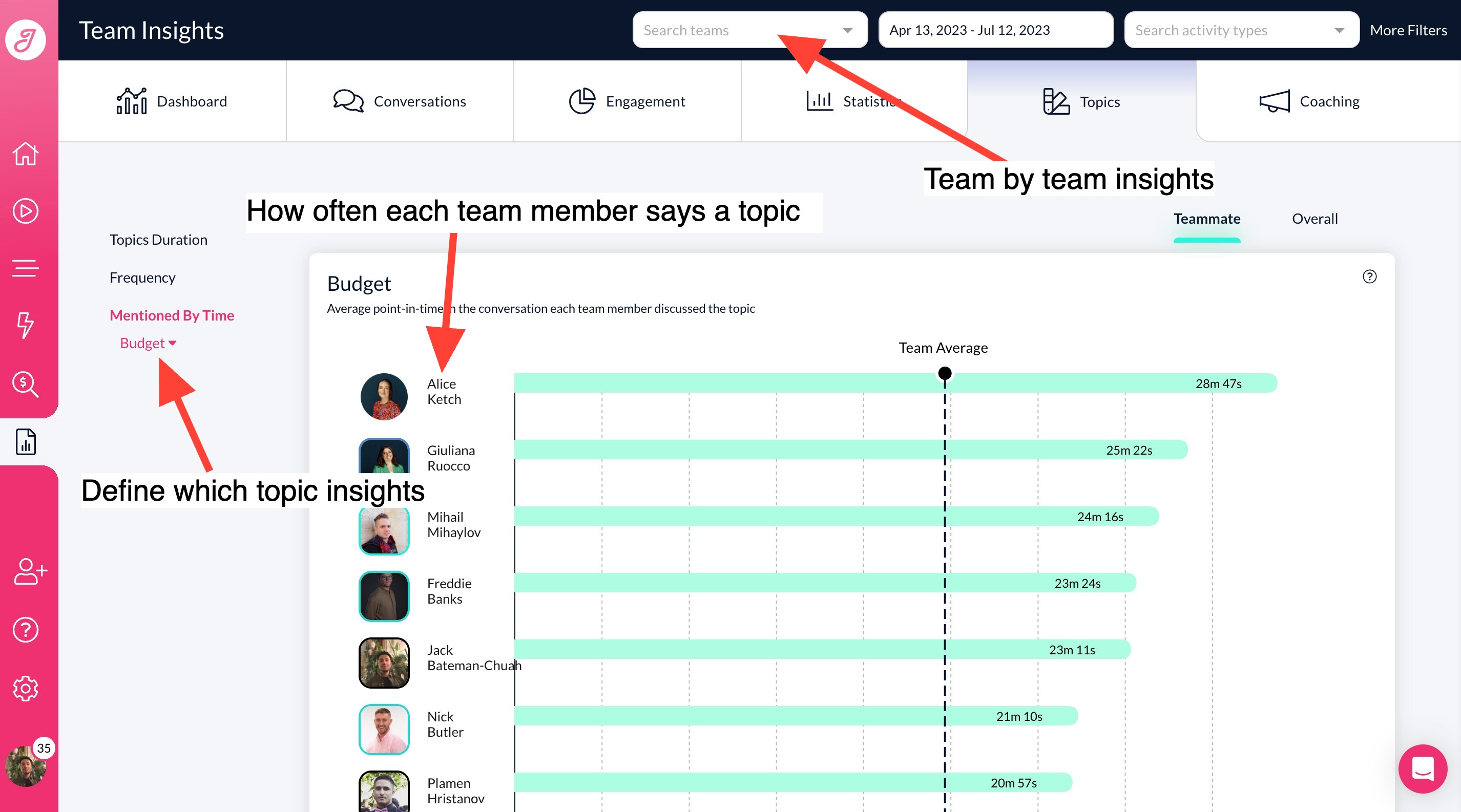
Step 2 - You can then dig into the specific high value meetings or calls where this framework was used and understand the conversation in more detail:
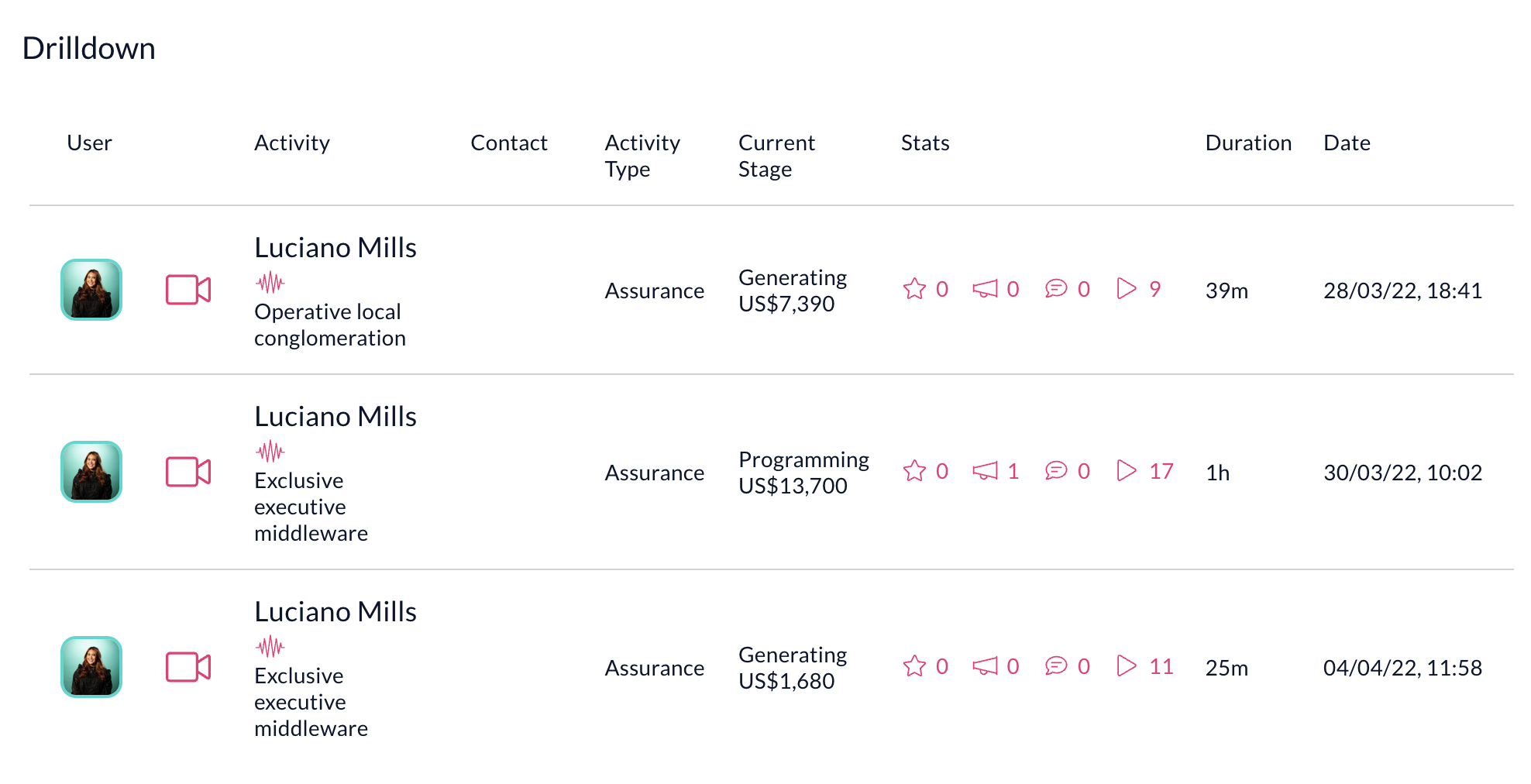
Step 3 - We can then go into that specific call and understand how the BANT framework was applied and provide coaching to improve overall performance:
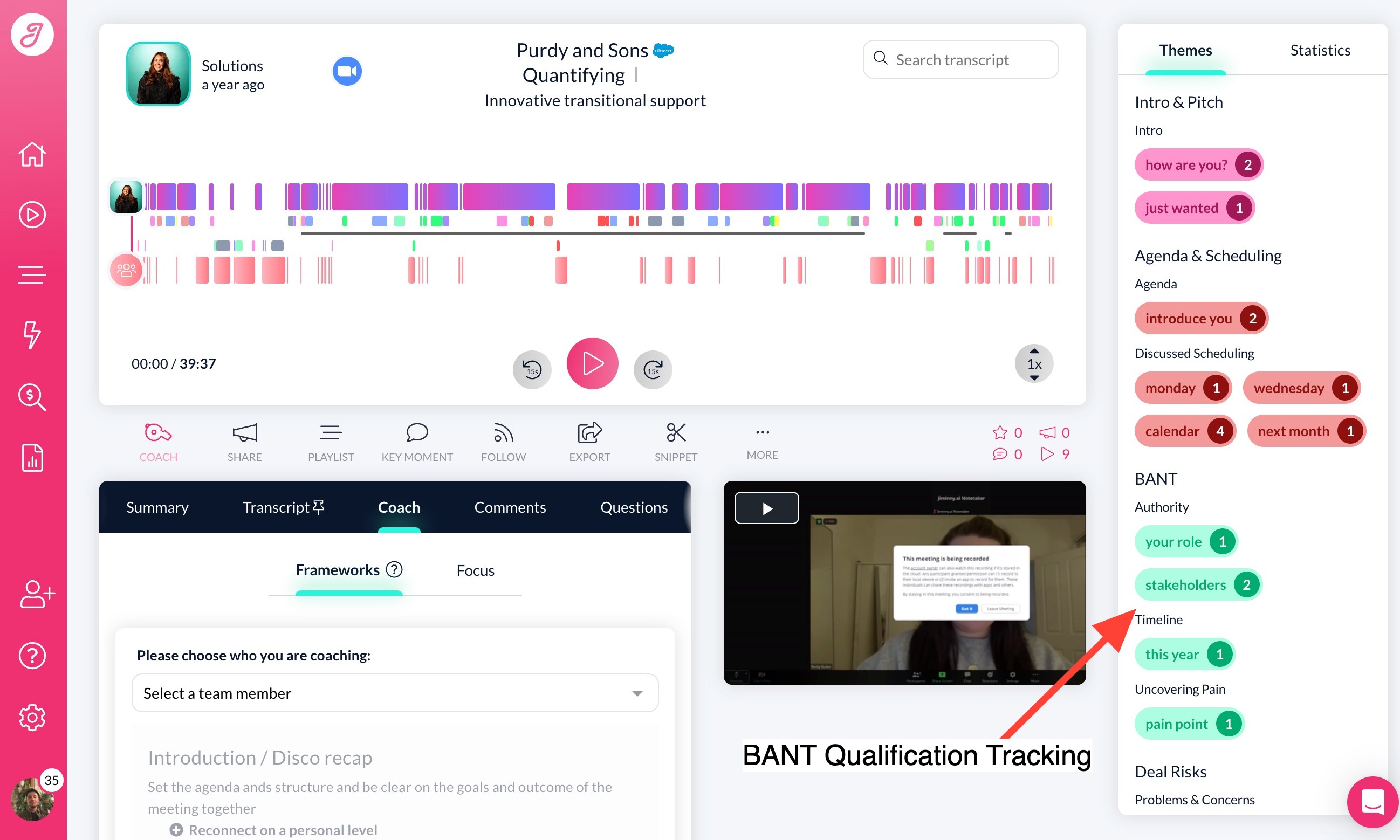
Example 2: Discovery Call Performance
You're a sales leader again but this time you business goal is around the improvement of Discovery Calls converting to Demo Stage as the current rate is below what is expected.
In order to do this, you've decided to utilise the BANT qualification information with was configured together with your Jiminny CSM and use that as a guiding indicator on which Discovery calls need easy coaching wins to drive better qualification and therefore, better conversion.
Step 1 - Head into Jiminny Deal Insights, which is a custom dashboard of your pipeline, equipped with Deal Risk indicators, activity timeline and a host of customisation possibility.
Based on those Deal Risks, Identify a specific Discovery meeting you want to review and take a closer look at: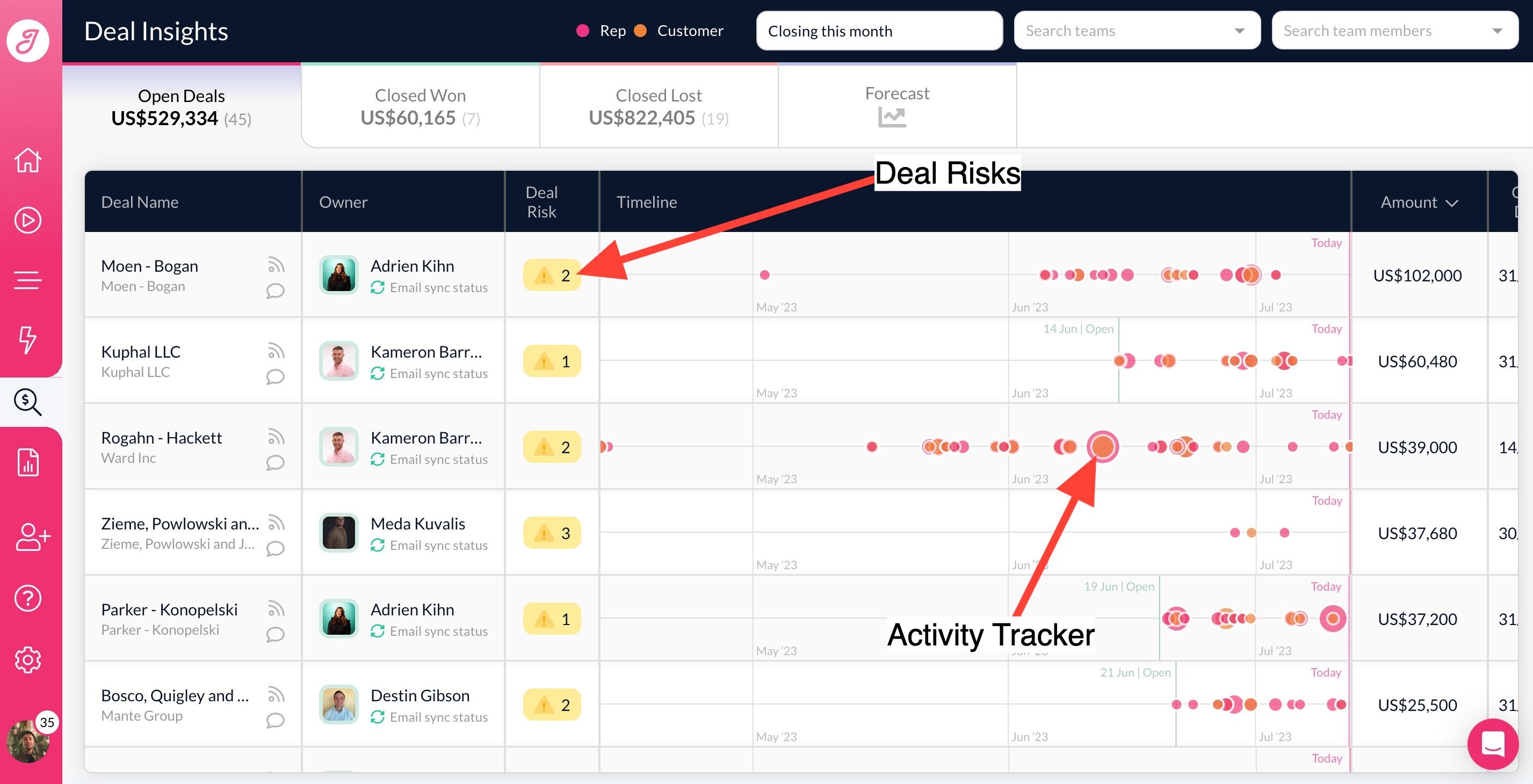
Step 2 - Review the top level Topics and Themes covered in the call to confirm what kind of qualification has been undertaken by the sales rep: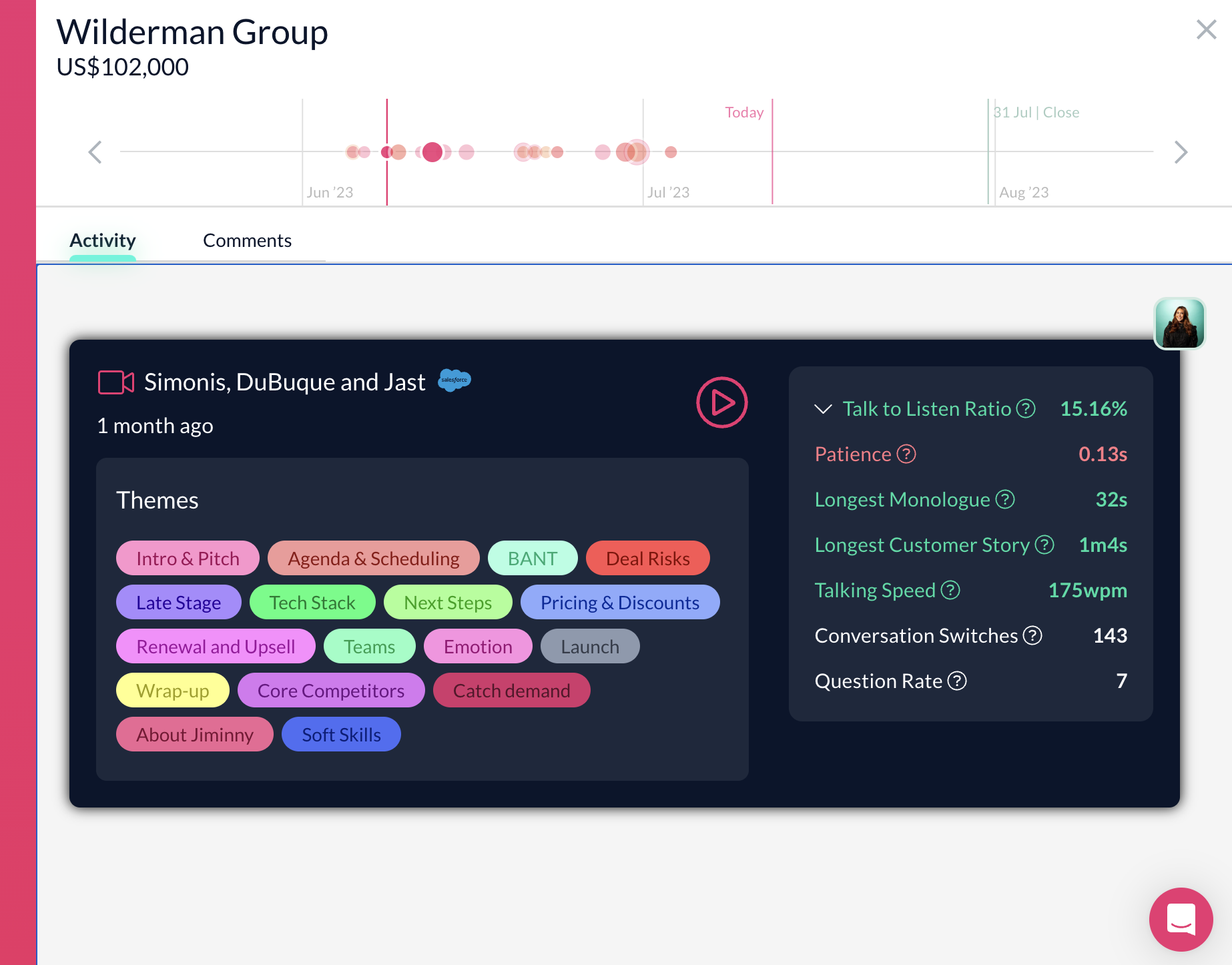
Step 3 - Head into the Playback page for the specific call and identify potential coaching opportunities to improve their Discovery performance with Data: 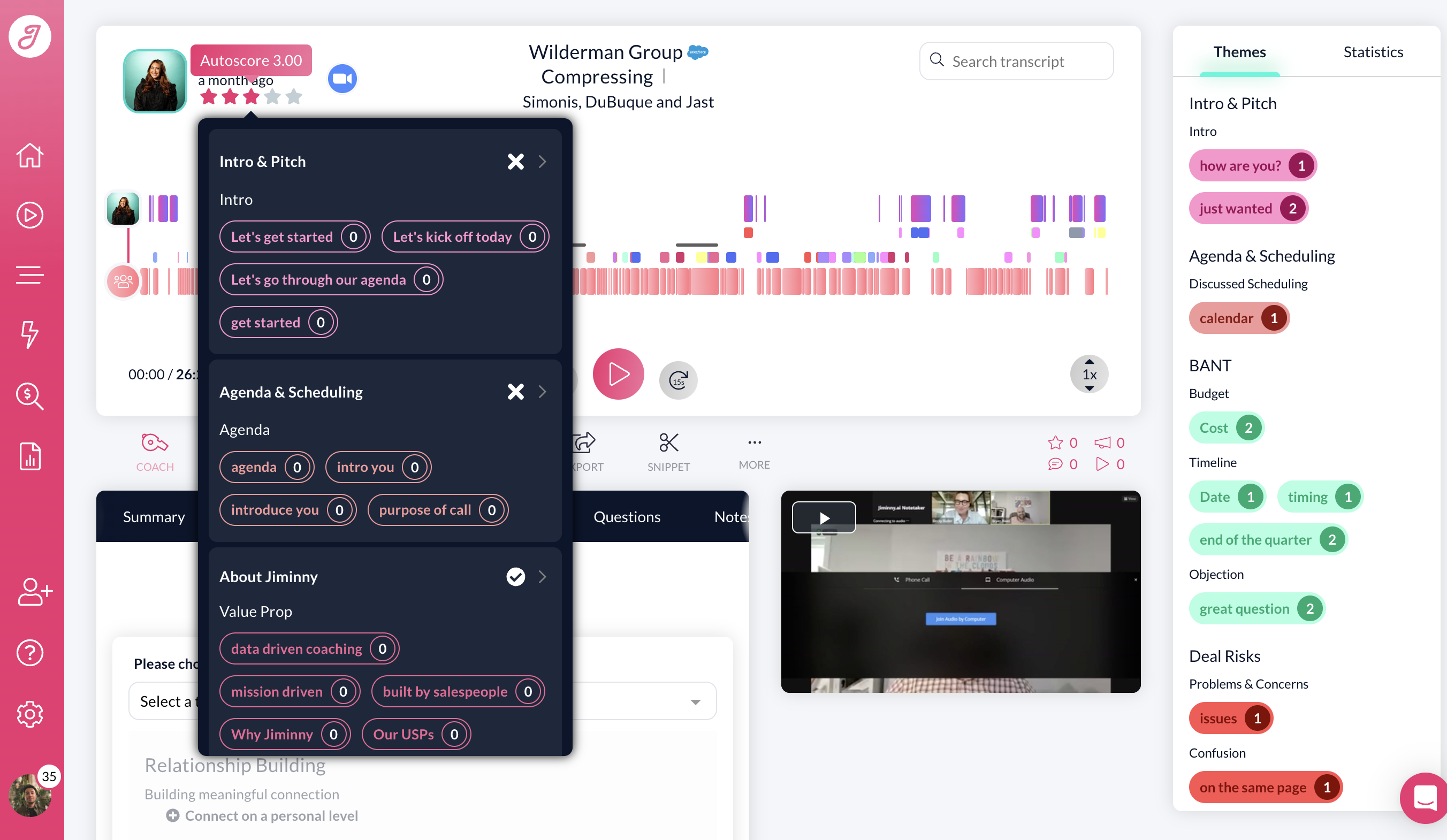
Example 3: Embedding a Sales Framework
Let's move over into another position, that of the Head of Sales Enablement.
You're looking to track how a new sales kick off has resonated with the sales teams and have configured Jiminny to automatically do this for you.
Step 1 - Configure Automated Call Scoring with your CSM to track and identify areas of success or improvement which can then be Self-coached or coached as part of a defined team process:
The key for all of these examples is to inspire you to take your coaching to the next level and understand the power of data, automation and targeted coaching.
If you're interested in any of these ideas you can read a full guide here or what to discuss something more specific - get in touch with your CSM who can help you create a plan in line with your business goals.